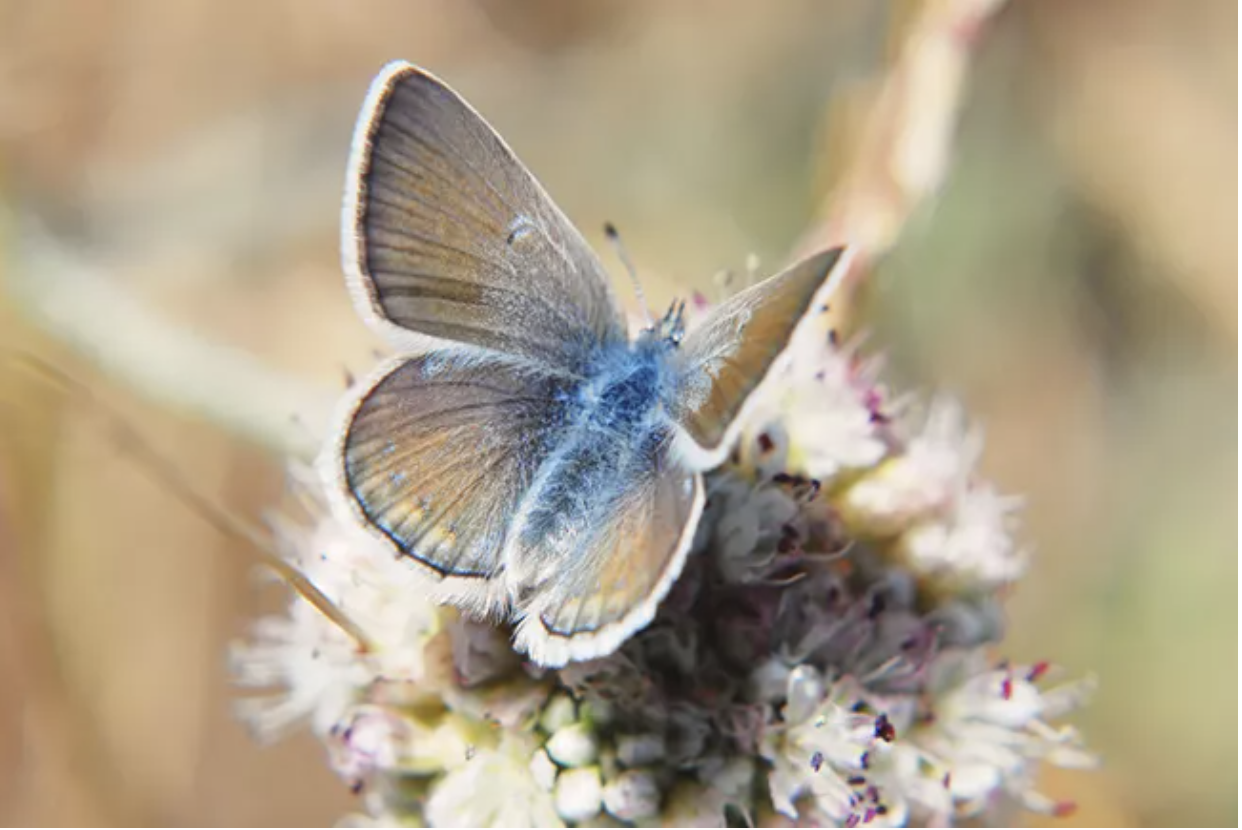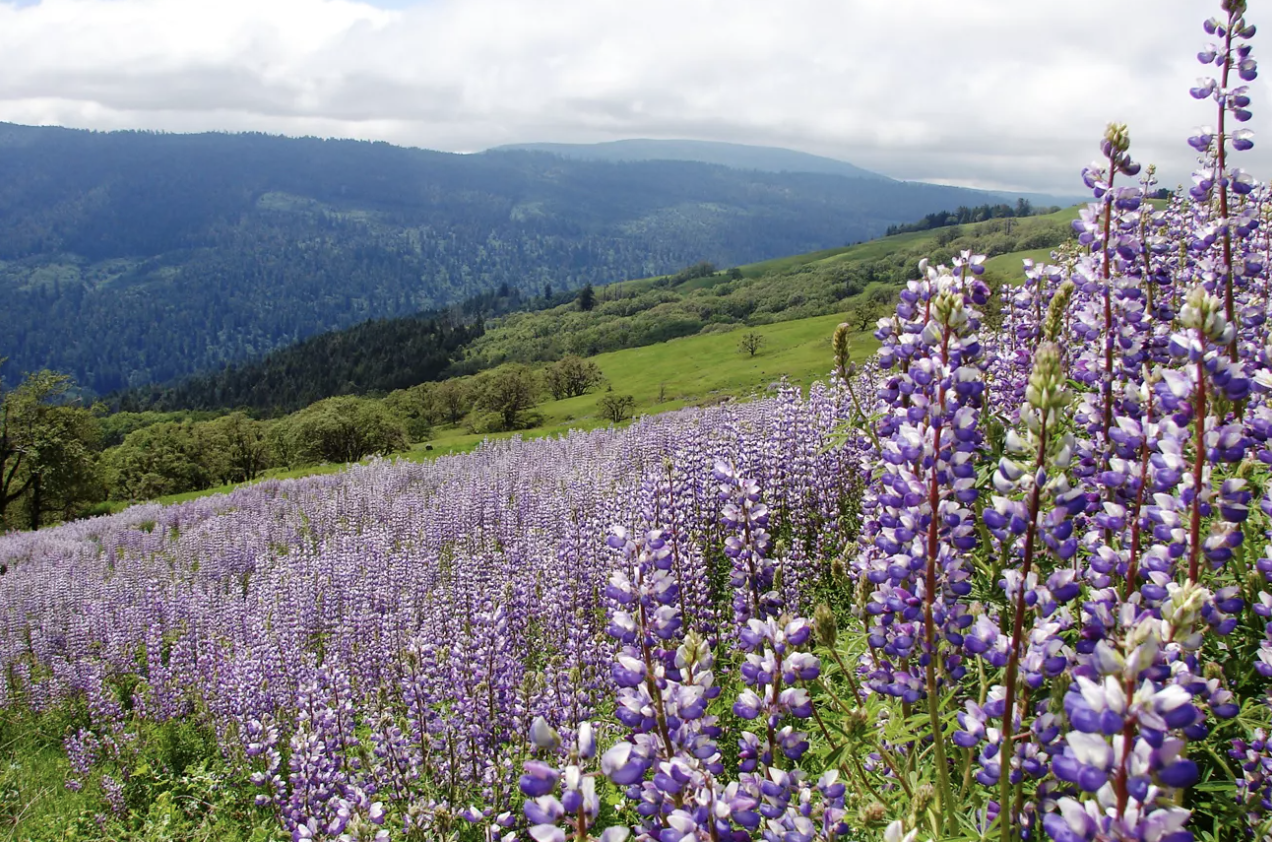Conserving the Mission Blue: How Lupine Regeneration Could Help This Endangered Butterfly
By Clare Duganne

[image caption]
Almost blending into the sky, the Mission Blue Butterfly (Icaricia icarioides missionensis), gracefully sports the light blue wings of its namesake. Fringed in white with irregularly shaped black spots on the underside, this interesting butterfly is endemic to the San Francisco area. Historical distributions encompassed much of the coastal scrub and grassland habitat of Marin County and the Northern San Francisco peninsula; however, its current range is limited to the Marin headlands, the Skyline ridges, the San Bruno Mountains, and Twin Peaks. Unfortunately, this one-of-a-kind butterfly has not escaped the effects of urbanization and human encroachment on its habitat. The Mission Blue, one of the first insects to be listed (Lindzey & Connor 2010), has not left the Federal Endangered Species List since 1976.
Why has the Mission Blue remained listed for so long? A large component of the butterflies’ decline in population has been attributed to habitat destruction and loss. The Mission Blue is a unique species as it depends almost entirely on only three species of lupine: silver lupine (Lupinus albifrons), summer lupine (L. formosus), and manycolored lupine (L. varicolor). There has been a significant loss of suitable habitat for lupine throughout the county due to multiple factors. One reason for lupine’s decline has been a decrease in animal grazing, specifically tule elk (Cervus canadensis nannodes), combined with fire suppression. Lupine thrives with regular grazing and intermittent fire so a reduction of these disturbances has strongly affected the overall population. In addition, the loss of these ecological processes creates ideal conditions for shrub encroachment and invasives to outcompete lupine. Urbanization and population fragmentation have also contributed to the decline of lupine and the Mission Blue.

[image caption]
Claire Whicker, an undergraduate at the University of California Berkeley is conducting her senior thesis, titled The Use of Disturbance-Based Treatments to Improve Habitat for the Endangered Mission Blue Butterfly, based on a National Park Service MBB conservation project. The project began in 2009, with treatments implemented in 2010 and data collected up until 2013. Claire joined this long-running project in 2024 to analyze and draw conclusions from the collected data and hopes to publish a paper at the end of her work.
Lupine is a disturbance-inclined species, its native ranges are characterized by regular soil disturbance. For this reason, the project decided to implement disturbance-based treatments to test lupine growth and regeneration rates. The treatments in this project include prescribed fire (conducted with burn boxes), and mechanical methods such as mowing, cutting, and soil scarification. The treatment blocks were placed adjacent to each other to compare the effects of the different disturbance methods. A Before After Control Impact (BACI) design was used, meaning the data collected is pre-treatment, post-treatment, and control data. This allows researchers to assess what is natural variation with time and what variation is the result of treatment.

[image caption]
In her analysis, Claire has so far found an increase in lupine regeneration in both plots, higher slightly for the prescribed burn treatment. Claire hypothesizes that greater levels of regeneration could be achieved with repeated and varied treatments. Although more research is needed to gain a deeper understanding of the mechanics behind lupine regeneration, this project sheds an optimistic light on the path forward for Mission Blue Butterfly conservation. Hopefully, the lupine and MBB conservation methods explored in this research project will help land managers improve habitat quality and therefore MBB populations in the Bay Area.
Claire is a 4th year Environmental Science and Ecosystem Management & Forestry double major. She is passionate about ecology, fire ecology, and conservation. Keep an eye out for her paper on the Mission Blue.
References
Mission Blue Butterfly (Icaricia icarioides missionensis) | U.S. Fish & Wildlife Service. https://www.fws.gov/species/mission-blue-butterfly-icaricia-icarioides-m...
Mission Blue Butterfly. (2018, June 5). Golden Gate National Parks Conservancy. https://www.parksconservancy.org/conservation/mission-blue-butterfly
Lindzey, S., & Connor, E. F. (2011). Monitoring the mission blue butterfly using immature stages. Journal of Insect Conservation, 15(6), 765–773. https://doi.org/10.1007/s10841-010-9375-2
